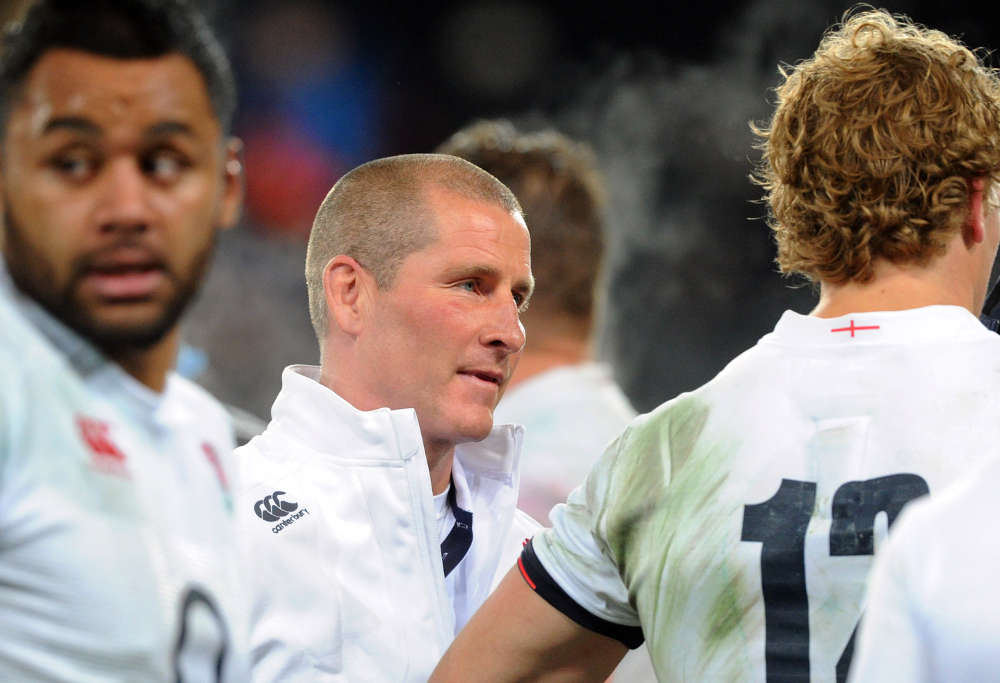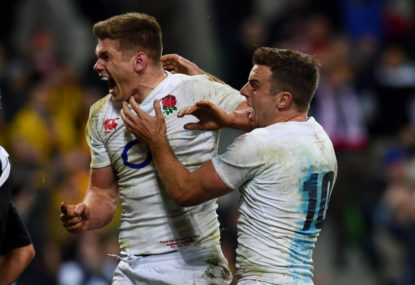First there was Eddie, engineering England’s 13-match unbeaten run in 2016. Then there was Ireland, handing the All Blacks their worst beating since 2012 in Chicago.
With the Springboks also enduring their biggest slump in living memory – maybe the nadir of their entire rugby history – there looks to be an inviting opportunity for the Northern Hemisphere to finally stake its claim, and make it stick.
Does this apply at the level below international rugby? The situation is complex.
Leicester Tigers have recently sacked their coach, Richard Cockerill, a dyed-in-the-wool Leicester man, after a philosophical power-struggle with ex-All Black Aaron Mauger.
Other English clubs have also turned to Southern Hemisphere coaching expertise to make progress – for example, Todd Blackadder and Tabai Matson replacing Mike Ford at Bath – or they have recruited top Southern Hemisphere backs to fast-forward expansion of their playing styles, to wit Kurtley Beale, Charles Piutau and Willie le Roux at Wasps, Matt Toomua at Tigers and Nick Evans at Harlequins.
There has been a cost. With the private ownership model of the English Premiership, many teams still struggle with the burden of debt on their backs. European champions Saracens filed an annual loss of £4m last year and carry an overall debt of £45m which is covered by their parent company and its South African stakeholders.
Wasps made a loss of £2.4m, Bath’s came in at £1.8m. The path to profitability winds through the darkness of an unknown future, and depends heavily the loyalty of rich benefactors like Bruce Craig and Derek Richardson. Before Richardson took over Wasps back in 2013, the club was heading towards administration and the loss of its professional status.
Another group of clubs have taken the opposite view. Exeter Chiefs, who I spotlighted in an article a couple of weeks ago, have eschewed the up-front debt, repay-it-later model and built from the ground up, staying firmly within their financial means and building progressively. The grapevine whispers say Nic White will be joining the Chiefs at the end of the current season to join the corps of seven Australians already at the club.
Over in Ireland, the model is far closer to Exeter than it is to Bath, Wasps or Saracens. The IRFU has a contractual stake in the top 15-20 players in the country, and the number of foreign players allowed across the main three provinces (Ulster, Leinster and Munster) is capped at 15, or one per position. This ensures the exposure and development of home-grown talent, and provincial rugby has had to grow from within, without the steroidal supplements.
Leinster are a stereotypical case. As multiple European cup winners a few seasons ago, they boasted top overseas talents like Brad Thorn, Rocky Elsom, Kane Douglas, Lote Tuqiri, Nathan Hines and Felipe Contepomi. Now they’ve trimmed back their expenditure on foreign imports and their squad contains no overseas stars at all. The highest-profile import, ex-Springbok full-back Zane Kirchner, is now in the twilight of his career at 32 years of age.
They pulled off what has proven to be a major coup with the appointment of Stuart Lancaster as senior coach last September. Stuart did not waste his time after he was sacked by the RFU for the World Cup disappointment in 2015. He was particularly keen to explore possibilities in the Southern Hemisphere, both in terms of coaching roles and ‘conversing’ with the Southern Hemisphere mindset on rugby.

Over his many missions to the other side of the globe, he has engaged with figures as diverse as Wayne Smith, Steve Hansen, Brian Lochore, Bob Dwyer, Wayne Bennett, Michael Maguire and Stephen Kearney. He has the humility to travel to broaden his rugby mind and in this sense he is atypical of the Northern Hemisphere coaching mentality.
When Leinster signed him, they were taking on a coach determined to bring Southern Hemisphere principles to bear on a predominantly youthful squad and that has been a terrific bonus. They have the best of both worlds – a squad based on developing local talent with a coach determined to instil the best of rugby knowledge from around the world in them.
Lancaster’s addition has galvanised an already excellent management/coaching group composed of Director Leo Cullen, John Fogarty and Girvan Dempsey and given it a new focus.
Munster, Ulster and Connacht are treading the same path with Rassie Erasmus, Les Kiss and Pat Lam at the top of the tree and only two real international stars (Charles Piutau and Ruan Pienaar at Ulster) between them.
I believe that for rugby in the Northern Hemisphere, the Exeter/Leinster model is more organic and sustainable in the long-term than speculative private ownership. There are many more variables and far fewer guarantees in the second course. Apart from the treacherous notion of predicting future financial good health some way off in the future while accepting massive debt in the short-term, everything depends on the goodwill of a benefactor who can, at any point, choose to cut his losses and walk away.
This is exactly what happened in Welsh rugby around 2004-2009, and the Welsh regions are still trying to recover.
The impact of the coupling of a vibrant and youthful local squad and a Southern Hemisphere coaching outlook has been marked at Leinster, nowhere more so than in the two games against Northampton in the middle of the Champions Cup group stage. Leinster beat their perennial English rivals by a combined score of 97-23 over the two matches, scoring 14 tries to two.
In the second encounter at the RDS stadium, they kept the ball in hand like a good New Zealand or Australian side, making 188 passes and building 113 rucks, and their attacking pattern bears the imprint of Stuart Lancaster’s experience in New Zealand.
Here are some examples of Leinster in action against the Saints:
Nowhere is the Kiwi influence more visible than in the play and expectation revolving around the position of hooker. Leinster have two hookers in the form of established international Sean Cronin and young back-up James Tracy, who are equivalent to Dane Coles in the Southern Hemisphere. They play in the wide 15-5 metre channels and (like Coles) they are expected to contribute creatively on attack.
Cronin’s run, footwork and offload in the opening sequence illustrates his sheer enjoyment and facility with ball in hand, and his finish in the second shows him deployed in the traditional Crusaders pattern with the hooker out wide as a finisher/distributor. When Leinster go wide-to-wide in three phases from scrum in their own half, Tracy plays the same role at 60:12, making the critical break out wide before delivering the inside pass to his support (Leinster scored four phases later).
The coaching framework puts the Leinster forwards under pressure to both make decisions and run and pass accurately:
In this long attacking phase-string it all comes together. In the course of the sequence, the Leinster forwards; receive 12 passes, take contact on nine occasions, produce six dominant runs or quick rucks and make two offloads (by Sean O’Brien at 42:06 and 42:27).
All without making any errors. It gives a taste of the way European rugby needs to evolve if it is to keep pace with the game in New Zealand especially. Whether the speculative private ownership model has the stability in the long-term to encourage this growth remains an open question.
In the meantime, the organic model in Ireland and down at clubs like Exeter in the UK will continue to advance steadily, to the point where one day, financial speculation may no longer be necessary to sustained success.






























































































